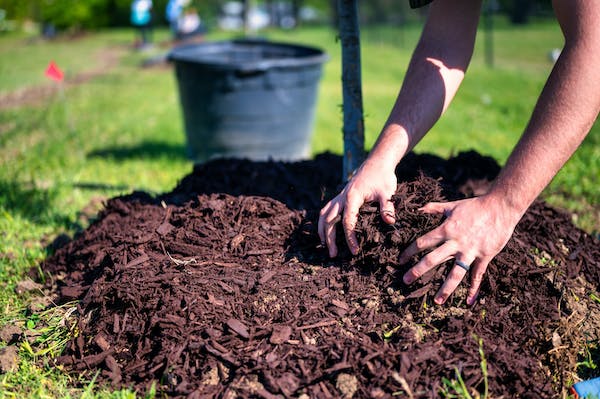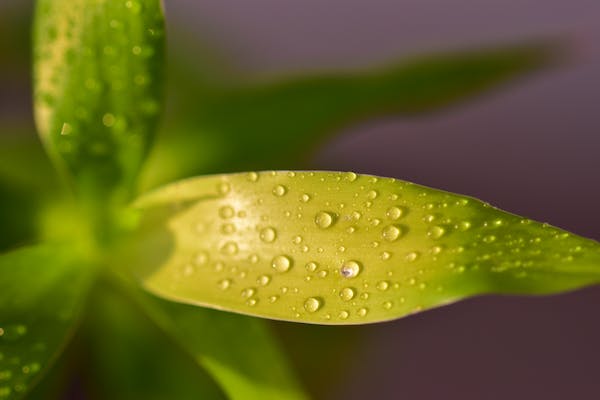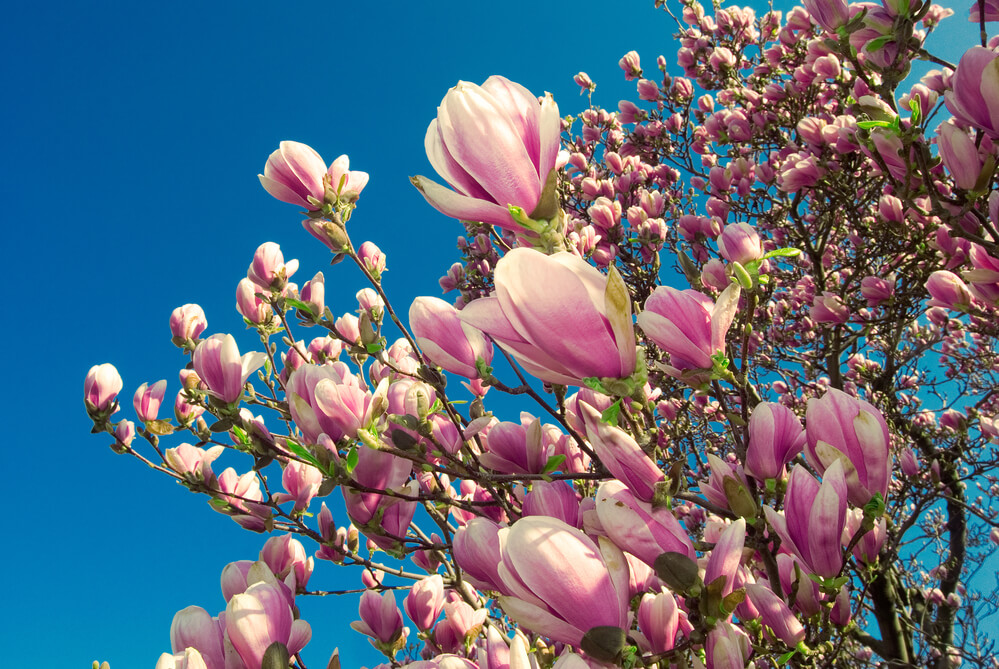Magnolia flowers are known for their large, fragrant, and pretty blossoms. They feature glossy leaves and a large pod that often opens in fall to show the shiny orange-red berries.
Beautiful magnolias are native to America and Asia. They are tall and can spread up to 40 feet. Some species are deciduous, while others can be evergreen or semi-evergreen. The deciduous species bloom in spring before shedding leaves.
How do you take care of a magnolia flower? We’ll be highlighting the details in this guide. But before we delve deeper into magnolia care, let’s explore the best conditions for growing magnolia flowers.
Cultivating Magnolia
When planting magnolia flowers, make a saucer-shaped pit around the seedling. This will help funnel water to the seedling’s root zone directly. Use a thick layer of sugarcane mulch or alternatives to keep its roots moist and cool.
Although resilient, magnolias require a constant water supply, especially during the dry season. They thrive in loamy, adequately drained soils rich in organic matter. That’s why using manure or compost, and mulching is vital.

The soil should be slightly acidic. Avoid alkaline or lime soils, as they can make it difficult for most magnolia species to grow well.
Magnolias do well in full sun but can also be grown in dappled shade with ample room for expansion. They only blossom if they get enough light and space. Plant them in less windy areas. This way, their leaves, and flowers will be safe from wind damage.
Magnolia flowers are the easiest to grow. They don’t require much attention. However, they can take longer to flower for the first time. When grown from seed, it will take 10 to 15 years to flower, but when grafted, they flower faster.
Caring for Your Magnolias
Magnolias only need a little push to thrive. Once established, they can live for years in conducive growing environments.
Here’s how to care for magnolia flowers.
- Watering magnolias: Most magnolia varieties can withstand hot summers and even drought. But they need regular watering for at least two years when they are still young. Use drip irrigation to supply the seedlings with water until they are well established.
- Fertilizing magnolias: When you use manure and compost in your magnolia’s early years of growth, they’ll be healthy and blooming. You can fertilize them in spring, fall, and summer, then let their roots play their role in finding nutrients by their fourth or fifth year.

- Weeding: Always weed around the base of your magnolia trees and ensure the mulches are far from its stem.
- Pruning magnolias: Not much pruning is needed for your magnolia flower. You can prune to shape up the tree or lop off all the branches that are damaged. Prune your trees after it is done blooming. That would be in early summer or late spring.
- Don’t allow foot traffic near your young magnolias’ root zone. This plant has the most sensitive roots susceptible to damage when stepped on.
Magnolia Flower Complications
Some magnolias, especially those from the south, are disease and pest-resistant. But in unfavorable conditions, they may experience these difficulties;
Leaf Spots
Blights and leaf spots are caused by bacteria and fungi like Cladosporium, septoria, and coniothynum. Although they don’t cause severe damage, you can control them by removing the contaminated leaves to prevent the spread.
Dying branches
Verticillium wilt and canker infections are major causes of branch death in magnolia. You can prevent this by trimming out the affected branches to ensure the tree maintains its health.
Diseases and Pests
The most damaging pest to magnolia is the Magnolia Scale, also known as Neolecanium. These insects thrive in the leaves of magnolias. You’ll only notice them once the crawlers start feeding on branches and new buds.
Slugs and rabbits are other pests you should get rid of. Slugs eat magnolia leaves, while rabbits
feed on the bark, causing fatal consequences. Wire mesh fencing can help ward off rabbits.
How to Care for Magnolia Flowers Grown in Containers
Magnolia species like magnolia stellate thrive well when potted. When choosing your container, look for terracotta or stone types because they’re stronger and more durable, with a wide base to hold the plant firm. They offer great drainage and convenience when re-potting.
When caring for potted magnolias;
- Supply them with water regularly. However, don’t overwater the plants. If you are on holiday during summer, ask someone to water them for you. During winter, keep the magnolias in a cool place like a garage or greenhouse. Alternatively, you can move them into a shaded and cool place.

- Use general-purpose fertilizer on potted magnolia flowers. Early May is the best time to apply fertilizer on them, right before they harden up for winter.
- Prune your potted magnolia annually to remove the damaged wisp stems and keep the plant’s shape and size.
- In winter, consider keeping your potted magnolias from getting water-logged. Their root systems are fleshy and get damaged easily by frost. Keep the soil from freezing over a long time. Keep the containerized plants in a cold greenhouse to protect them from cold winds and frost.
Wrapping Up
Taking care of a magnolia flower is easy. You first need to ensure their base is mulched to sustain the much-needed acidity levels and retain the soil moisture.
The best thing about these beautiful flowers is that they require little care, especially when they’re already established. All that is needed is regular watering, adequate mulching, and proper soil pH to help them thrive.
In a few years, your garden will be full of blossoming magnolias, proof that you maintained proper care of the beautiful flowers.














